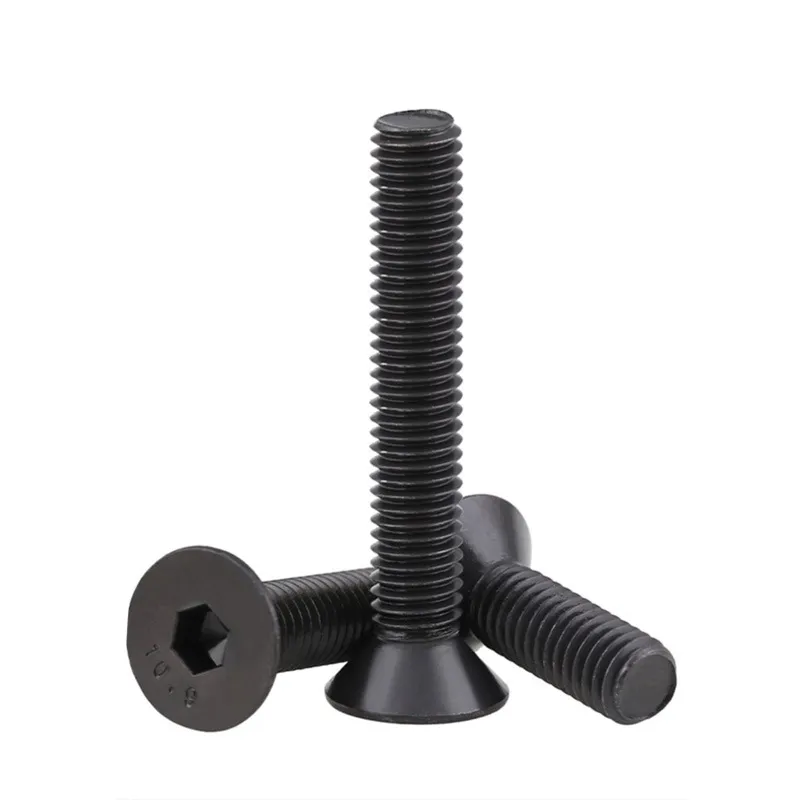

Flanged Hex Nut for Enhanced Stability and Secure Fittings in Various Applications
Dec . 21, 2024 04:38 Back to list
Flanged Hex Nut for Enhanced Stability and Secure Fittings in Various Applications
Understanding Hex Nuts with Flange A Comprehensive Guide
In the world of hardware and fasteners, hex nuts with flange are essential components that play a crucial role in various applications. They are widely used in construction, automotive, machinery, and many other industries. Understanding the design, applications, and benefits of hex nuts with flange can significantly enhance your project outcomes.
What is a Hex Nut with Flange?
A hex nut is a six-sided fastener, typically made from materials like steel, stainless steel, or brass. It features a hexagonal shape that allows for easy tightening and loosening with a wrench. The distinguishing feature of a hex nut with flange is the additional circular disc or flange that is integrated into its base. This flange provides added surface area, increasing the nut's load-bearing capacity and stability during fastening.
How They Work
Hex nuts with flange are designed to distribute the load over a broader area compared to standard hex nuts. This unique feature allows for a tighter and more secure fit when fastened to a bolt or screw. The flange also acts as a built-in washer, reducing the risk of the nut loosening from vibrations or dynamic loads. This makes them ideal for applications where securing fasteners under challenging conditions is vital.
Common Applications
1. Automotive Industry Hex nuts with flange are frequently utilized in vehicles for securing components like engine parts, suspension systems, and chassis fittings. Their ability to withstand vibrations makes them preferable in many automotive assemblies.
2. Construction In building structures, these nuts are used to secure beams, frames, and other structural elements. Their enhanced grip is particularly beneficial in outdoor applications where weather conditions can impact the integrity of fasteners.
3. Machinery and Equipment Hex nuts with flange are used extensively in machines and equipment for securing mechanical parts together. Their robustness allows heavy machinery to operate smoothly without the risk of hardware failures due to loose fasteners.
hex nut with flange

4. Manufacturing In production lines, these nuts support various assemblies, including assembly lines, conveyor systems, and other automated manufacturing processes. Their reliability contributes to the efficiency of industrial operations.
Benefits of Using Hex Nuts with Flange
1. Improved Load Distribution The flange design helps to distribute loads more evenly, which can reduce the risk of stress concentrations and potential failures.
2. Vibration Resistance Because of their larger surface area, hex nuts with flange resist loosening over time due to vibrations, making them perfect for applications in dynamic environments.
3. Ease of Installation The integrated flange simplifies the installation process since there's no need to use separate washers. This saves time and effort during assembly and maintenance.
4. Reduced Overhead Costs Since these nuts can perform the functions of both a nut and a washer, they reduce the number of parts needed in applications, potentially lowering material costs.
Choosing the Right Hex Nut with Flange
When selecting a hex nut with flange, it is essential to consider factors such as material type, size, and grade. The load requirements of your application will determine which specifications are necessary. For example, stainless steel hex nuts with flange are commonly used in applications where corrosion resistance is critical, such as in marine or chemical processing environments.
Conclusion
Hex nuts with flange are more than just simple fasteners; they are vital components that enhance the security and longevity of numerous applications across diverse industries. Understanding their design, functionality, and advantages can help professionals select the right fasteners for their projects, ensuring safety and durability. Whether you’re involved in construction, automotive, or manufacturing, incorporating hex nuts with flange into your assemblies is a wise choice that can lead to improved performance and reliability.
Latest news
-
High-Strength Hot-Dip Galvanized Bolts-Hebei Longze|Corrosion Resistance&High Strength
NewsJul.30,2025
-
Hot Dip Galvanized Bolts-Hebei Longze|Corrosion Resistance&High Strength
NewsJul.30,2025
-
Hot Dip Galvanized Bolts - Hebei Longze | Corrosion Resistance, High Strength
NewsJul.30,2025
-
High-Strength Hot Dip Galvanized Bolts-Hebei Longze|Corrosion Resistance, Grade 8.8
NewsJul.30,2025
-
Hot Dip Galvanized Bolts-Hebei Longze|Corrosion Resistance,High Strength
NewsJul.29,2025
-
High-Strength Hot Dip Galvanized Bolts - Hebei Longze Metal Products Manufacturing Co., Ltd.|corrosion resistance&high strength
NewsJul.29,2025

